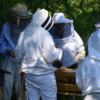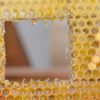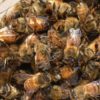How to Autopsy a Honey Bee Colony
By Anita Deeley at BeverlyBees.com
So your hive died, now what do you do? The first thing to do after you discover a dead hive is to autopsy a honey bee colony and look for signs of disease, varroa and anything else you think may have caused the colony’s demise.
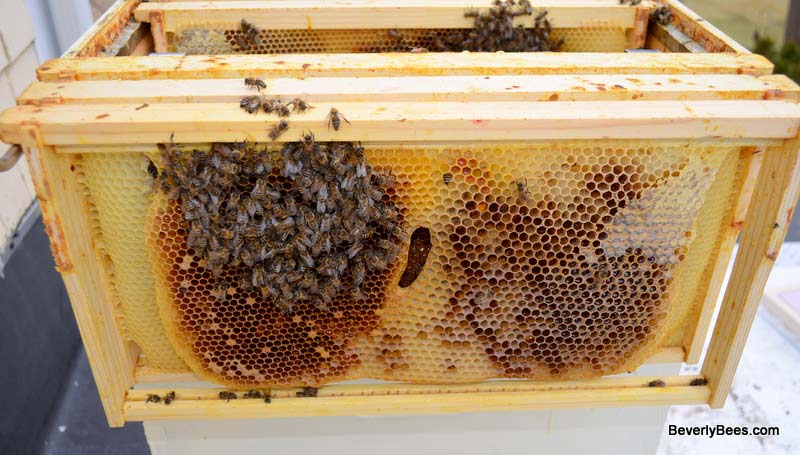
It important to note the time of year your hive died. If your hive died over the winter it may have died from condensation, starvation or cold which is typical in a winter killed hive. Nosema Apis is also more common in the winter when bees cannot get outside to defecate regularly. If your hive collapsed in the fall, varroa could be the culprit as the population of varroa is usually highest then. Performing an autopsy of a honey bee colony is like solving a mystery and a variety of clues must be found and taken into account together, before you can make a final analysis of what happened to your hive. Here are some other basic clues to look for.
Does the colony have a queen, are eggs and open brood in the cells? Is the brood mostly drones? Are there many emergency queen cups or cells?
A colony without a queen, eggs or brood and many emergency queen cups or cells may have lost their queen and were unable to replace her. If the queen is present in the hive but dead, and it is not a winter kill, there should be eggs in the cells and open brood. If there are no eggs or open brood, the colony may have died from queen failure. A large number of drone cells may indicate queen failure or laying workers if the queen is absent.
Do you see a lot of varroa on the bottom board or on capped brood when you remove them from their cells for inspection?
If so, your hive may have suffered from varroa collapse.
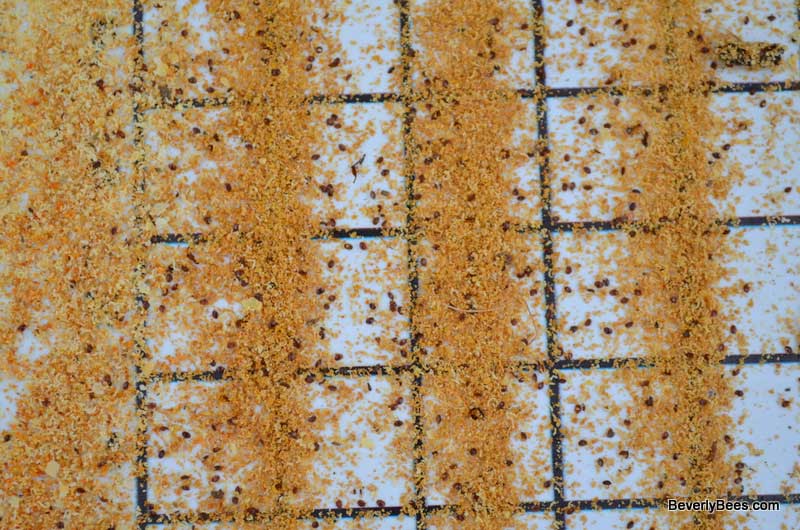
Do the bees that died look healthy or are they deformed with short abdomens and missing or stubby wings?
Deformed bees with stubby abdomens and missing or deformed wings may have deformed wing virus which is usually spread from varroa. Look at the bottom board for signs of varroa, the combs for white varroa feces, and pull some capped brood to examine them for varroa infestation.
Are there many dead and dying bees in front of the hive? Do the bees have their tongues sticking out?
Your bees may have been poisoned with pesticide. If you want to send them in for testing, collect as many bees as you can, preferably ones just dying and freeze them as soon as possible. Freeze your combs with pollen stores. Pesticide dissipates very quickly and samples must be frozen as soon as possible to preserve the integrity of the chemicals. Call the Columbia Food Laboratories to inquire about testing for pesticide poisoning. Here is a good resource from the University of Florida about pesticide poisoning and honey bees.
Are the bees hairy or greasy and black looking?
Greasy, black bees may have a paralysis virus such as chronic bee paralysis or another disease. You may want to send them in for testing or ask for help from your apiary inspector.
Do any of the bees have wings separated making the shape of the letter K?
Your hive may be infected with K Wing which can be caused from Varroa, Trachael Mites, Nosema and more. More investigation will need to be done.
Did the bees die with their heads in the cell, butts sticking out, away from honey stores? Was the weather previously cold?
Your bees may have died from starvation. This happens often in cold weather when the hive is unable to break cluster to move to their stores. This is common in a winter killed hive.
Is there honey and pollen in the hive? Are there many dead bees with their head in the cells?
If there are not adequate stores, your bees may have died from starvation. Starvation can and does happen in the summer with flowers blooming if no honey is in the hive.
How many bees are left in the hive? Are the dead bees inside the hive or outside on the ground in front of the hive?
Lots of dead bees outside the hive can indicate a number of factors including starvation, pesticide poisoning, disease, moisture, etc. Lots of dead bees inside the hive can also indicate a number of things as well, winter kill, starvation, pesticide, disease. You need to look for other clues. If you have access to a more experienced beekeeper or apiary inspector it does not hurt to get a second opinion.
Are there few dead bees in the hive with only a handful of bees, brood and the queen remaining? This hive may have suffered from Colony Collapse or Varroa Collapse. Look for other symptoms. Are many varroa present on the capped brood or the bottom board?
Perhaps varroa killed your bees. If you have other hives and this hive is not getting robbed out, yet resources are scarce, your bees may have suffered from Colony Collapse Disorder.
Does the brood look healthy or is it discolored and contorted? Does it smell? Does it look melted? What does the brood pattern look like?
A spotty brood pattern is common in failing hives. The reduced number of bees cannot keep up as the population hits a death spiral. If the brood is discolored or smells, it could be old brood, brood that got chilled or something more serious like European or American Foulbrood. It is best to send these samples away for analysis before using these combs. If it is EFB or AFB combs may need to be irradiated, discarded or burned. It is best to speak with an apiary inspector to find out what the rules are in your state for treating this disease. For photos of EFB, click here.
Are the capped brood punctured with holes and sunken in?
This could be a symptom of varroa or another disease such as American Foulbrood. Look for more clues. You may want to send your bees in for testing.
Are there brown or yellow stains all over the outside of the hive and the hive opening and/or inside the hive?
This could be dysentery or nosema. You may want to send your bees in for testing.
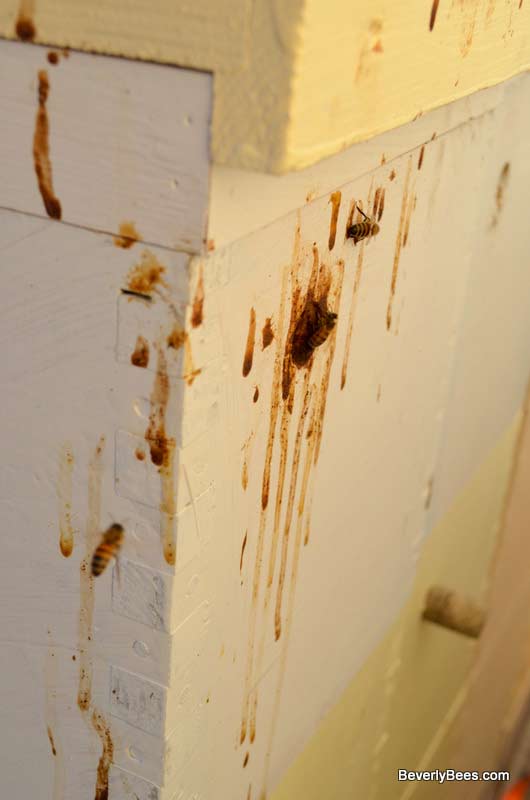
Are there trembling bees crawling around outside the hive?
Your bees may have a multitude of diseases such as varroa collapse, several types of virus, starvation or pesticide poisoning. You may want to send them in for testing.
Does the larvae string out if you insert a toothpick into the cell?
Your bees may have American Foulbrood and combs cannot usually be reused. Send your comb in for testing and/or speak to an apiary inspector, a more experienced beekeeper, or your local bee club. Combs and equipment may need to be burned or irradiated to kill the spores from this disease and keep it from infecting other bee colonies.
Are there many bees with their heads in the cells away from honey stores? Did your hive die over the winter or the summer?
Your bees may have died from starvation, common in winter killed hives.
Does the hive seem wet, is there a lot of moisture in the hive? Is there mold in the hive?
Condensation may have killed your bees. Wet, cold bees are dead bees. Try to ventilate your hives better to allow more air circulation. Check to see that equipment is intact and water cannot get into the hive. Check for mold and mildew in the hive, these may also be indicators that your hive needed more ventilation.
Here is a good link showing different types of bee diseases so you have a reference for what to look for and how to self diagnosis your hive. If you are new to beekeeping I highly recommend asking an apiary inspector or a more experienced beekeeper for help in determining what happened to your hive.
There are also many helpful bee links on this website on the Resources page as well as the right sidebar called Helpful Bee Links that may help you diagnosis what is wrong with your bees. Often times when a hive gets weakened, many different symptoms will show up as the hive is less able to take care of itself. In this situation diagnosing what was the actual killer was can be confusing. If your hive is infested with wax moths or wasps, these are opportunistic parasites and usually take advantage of already weakened hives. Strong hives are usually able to keep them at bay. If you see these pests, it is not likely the cause of your colonies death. The same is true of mold. If you find mold on your bees or combs, it simply means the bees have been dead for a while and were unable to care for the hive, it does not mean mold killed your hive. It may however also be a clue that this hive could have been killed by excess condensation and next time you should try to give your hive more ventilation.
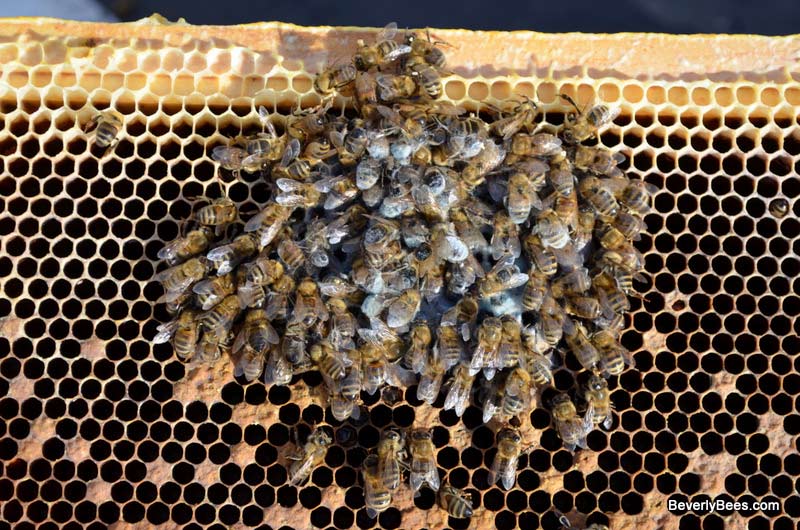
If you think there is disease in the combs or bees, or think your bees may have perished from Varroa you can submit a sample to the Bee Lab in Beltsville, Md to test for this. It is free for US residents and will take a few weeks to get results back. This lab does not test for viruses or pesticides and does not distinguish between nosema strains, only identifies if nosema is present. If you would like to reuse your combs in another colony without worrying about if they are infected with a contagious bee disease it only takes a few minutes to prepare and mail in a sample.
Other Posts You May Enjoy:
- How To Prepare A Sample For Bee Disease Diagnosis or Pesticide Analysis
- Death of a Hive: A Postmortem Analysis
- Mass Bee Field Day 2012
- So Many Bees, So Little Honey
- Ahhh Mites! Treating For Varroa Destructor
- I Want Candy! So Let’s Make A Candyboard For Winter Feeding

